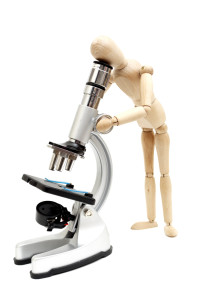SEEKING ANSWERS!

 Concrete can degrade and fail due many causes and sometimes the reason is not quite evident. We often use sounding techniques such as tapping with a hammer or chain dragging as well as chemical analysis or electrical measurements to diagnose concrete problems. When these simple tests prove inconclusive, we can send a concrete sample from the structure to a laboratory for petrographic analysis.
Concrete can degrade and fail due many causes and sometimes the reason is not quite evident. We often use sounding techniques such as tapping with a hammer or chain dragging as well as chemical analysis or electrical measurements to diagnose concrete problems. When these simple tests prove inconclusive, we can send a concrete sample from the structure to a laboratory for petrographic analysis.
Concrete petrography is an effective technique for investigating the quality, workmanship, durability and defects of concrete. It involves the examination of the concrete with an electron microscope that can magnify the sample by up to 10,000,00 times and allows for the description of hardened concrete in the lab, using specialized techniques borrowed from those used in the study of rocks.
The analysis can provide a wide array of information that cannot be determined in the field such as:
- Information on the composition and construction of the concrete sample,
- Identification of the aggregates, the quality of the cement paste, and the bond between them,
- Determination of the water to cement ratio, which is a major factor in concrete strength,
-
Assessment of the concrete’s resistance to damage by freeze and thaw cycles, sulfate attack, alkali-aggregate reactions, aggregate durability, and carbonation, and,
-
Evaluation as to whether a failure was caused by a faulty mix design or poor workmanship during placement and curing.
We do not use this service too often, but when we need to know more about the concrete, petrography often gives us the answers that we are seeking.
